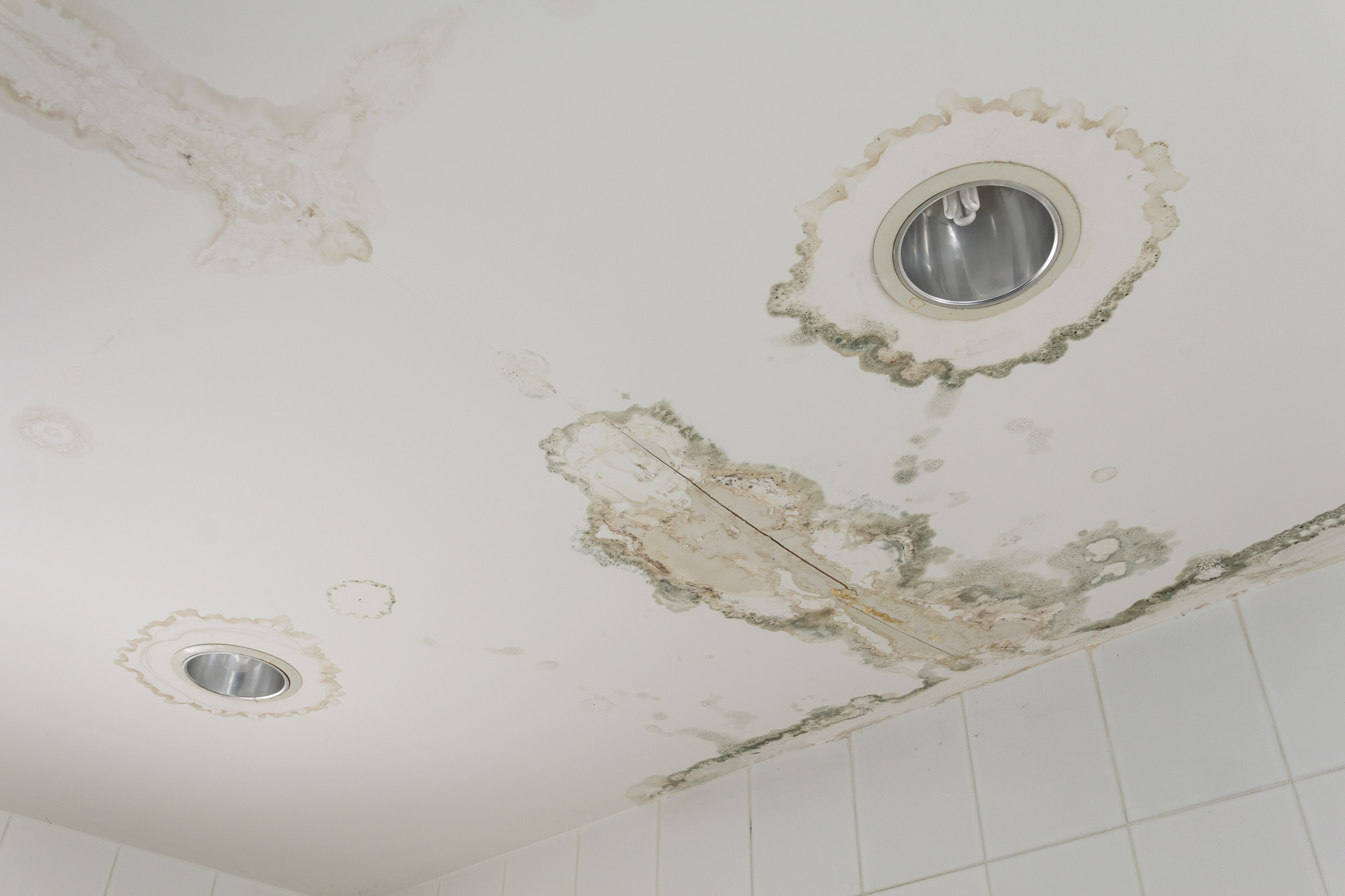If you’re one of the homeowners who didn’t forget about the fifth wall during home construction, then it’s safe to assume you’ve thought a lot about ceiling styles, colors, wallpapers, etc.
You see, some people make ceilings an afterthought, not realizing, for example, that ceiling height can make rooms more spacious or cozier. Of course, no matter how much or how little you’ve thought about your ceiling choices, water stains are always a cause for concern.
That said, let’s talk about what causes water spots on the ceiling, why it’s essential to address the root issue, and how to cover them up.
Top Reasons for Water Spots on the Ceiling
Before you think about how to fix water spots on the ceiling, identify first what’s causing the problem. If you just paint over the water stains, you could run into bigger problems later on, such as serious structural damage or electrical issues.
One cause of water spots on the ceiling is a roofing problem. If there are missing shingles or faulty flashing, it could lead to a leak. You can confirm this if you see water spots on the ceiling after heavy rain.
If it’s a roofing problem, don’t delay roof repair and find a reliable contractor like Falcon Roofing. Roofers can also check for attic condensation, which is another likely reason why water stains have appeared on your ceiling. Other causes for spots on the ceiling are grout and caulking problems and plumbing leaks if you have an upstairs bathroom.
Tips for Tackling the Stains on Your Ceiling
Let’s say you’ve taken steps to address the underlying issue, and now you’re ready to cover those ugly spots. The first step to take is to give your ceiling a thorough cleaning.
The good news is there’s no need to buy a special cleaner. Mix a cup of bleach with three cups of water and apply to the stains. Don’t forget to put drop cloths on the floor and be extra careful if you’re using a ladder.
Once you’ve wiped the stains with the bleach solution, use a clean cloth to dry the damp areas. When they’re completely dry, prepare to paint over the water spots. For best results, use a stain-blocking primer.
If your primer is several shades lighter than your ceiling color, don’t worry. No one will notice the paint job as long as you paint it over with a color-matching latex or alkyd ceiling paint. Try to use ceiling-specific paints instead of traditional paints since the former has a thicker formulation and can hide unsightly spots.
Look Up and Smile
Dealing with water spots on the ceiling should be easier now that you know what to do about them.
Remember to first look for the cause and address it before painting the stains over. You may have a bigger problem that needs repair, like a roof leak, leading to structural and electrical issues later.
For more home improvement tips and advice, don’t hesitate to check our other posts.






